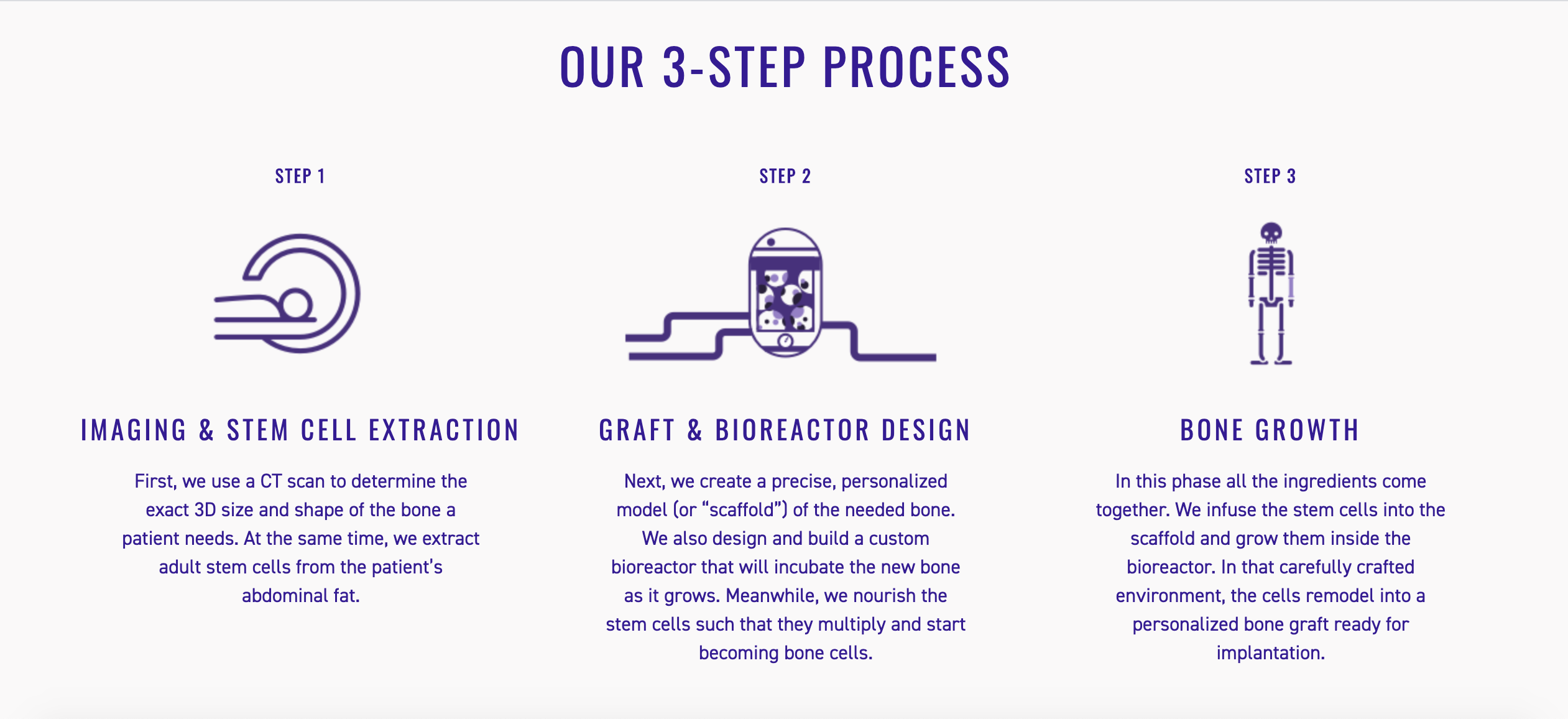Dr. Nina Tandon: Co-Founder of the First Company to Grow Human Bones for Reconstruction
March 2, 2020This profile on Dr. Nina Tandon is the first post of a month-long series of profiles about female STEM innovators in honor of Women’s History Month. Check back each weekday to read a new profile, the next of which focuses on Danielle Dy Buncio, Co-founder and CEO of VIATechnik, a construction technology firm, in honor of Women in Construction week.
From a young age, Dr. Nina Tandon and her three siblings enjoyed science experiments and were encouraged to learn all they could1. Dr. Tandon, took a particular interest in the science of the human body after learning one of her siblings was color blind and another and suffered from night blindness1.
“I was very interested in all these electrical currents that underlie the nervous system and I started learning how those currents are also involved in almost every process in the body, from embryonic development to wound healing, and that is what I wanted to follow,” Dr. Tandon said in an interview with Vogue magazine where she also revealed that her curiosity fueled her through degree after degree1.
Since taking her first college course at 14, Dr. Tandon pursued STEM fields through earning her Bachelor’s in Electrical Engineering from the Cooper Union, then Master’s in Bioelectrical Engineering from MIT, then PhD in Biomedical Engineering, and finally an MBA from Columbia University2.
After receiving her bachelor’s degree, Dr. Tandon worked briefly Avaya Labs in telecommunications before receiving a Fulbright Scholarship to study biomedical engineering in Italy3. In Italy, Dr. Tandon worked on developing “an electronic nose used to “smell” lung cancer” then worked as a consultant at McKinsey and Company before fully dedicating her time to biomedical engineering3.
It was during her doctoral studies that Dr. Tandon, who was working on growing cardiac tissue, met Dr. Sarindr Bhumiratana, while he was working on bone2. The two formed a partnership which in which each person brought their own skills set together to create a business plan. In 2012, this business plan was actualized as EpiBone, “the world’s first company growing living human bones for skeletal reconstruction” according to Dr. Tandon’s website2,4.
EpiBone uses stem cells from patients in need of new bones to produce skeletal structures based on each individuals DNA profile, which will decrease the likelihood of rejection, simplify surgeries, and possible shorten recovery time for patients5. EpiBone uses a three step process which first involves using a CT scan to obtain measurements of the bone to be constructed and stem cells from abdominal fat in adult patients, then a model of the bone is created in a bioreactor to facilitate growth, and finally the stem cells are added to the newly grown bone in the bioreactor to grow a ready-to-use replica bone6.
Dr. Tandon and Dr. Bhumiratana have already cleared the hurdle of the FDA approving the use of their technology on human patients for trial.
“I’m looking forward to a time when we can really extend our longevity and vitality, as opposed to just extending our lives,” Dr. Tandon told Vogue. We will learn more and more about the intelligence that lives throughout our body, not just in the brain but also with the awareness and intelligence of the cells that make up our body and connecting with them to make up new technologies.1”
In addition to her tangible work regrowing bones, Dr. Tandon has authored 10 journal articles, six book chapters, and is the co-author of Super Cells: Building with Biology4. She has also hosted three TED talks, is an Adjunct Professor of Electrical Engineering at the Cooper Union, and formerly worked as a Staff Associate Postdoctoral Researcher in Columbia University’s Laboratory for Stem Cells and Tissue Engineering4. Dr. Tandon has three patents and was named one of the 100 Most Creative People in Business by Fast Company4.
For more information on Dr. Tandon and her work, click here to listen to her TED talks.
References:
- Vogue Magazine. (2017, October 28). Meet Nina Tandon, the woman who is working on growing bones in a lab. Retrieved from https://www.vogue.in/magazine-story/meet-nina-tandon-the-woman-who-is-working-on-growing-bones-in-a-lab/.
- Techonomy. Nina Tandon. Retrieved from https://techonomy.com/people/nina-tandon/.
- Columbia Business School. (2016, December 19). Growing the Future of Medicine. Retrieved from https://www8.gsb.columbia.edu/articles/ideas-work/growing-future-medicine.
- Nina. Retrieved from http://ninatandon.co/nina/.
- The Lavin Agency Speakers Bureau. (2020). Nina Tandon: How to revolutionize an industry, one cell at a time. Retrieved from https://www.thelavinagency.com/speakers/nina-tandon.
- EpiBone. (2020). OUR 3-STEP PROCESS. Retrieved from https://www.epibone.com/technology/.



